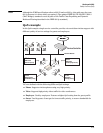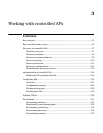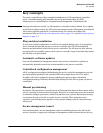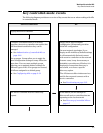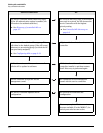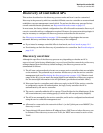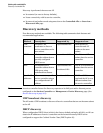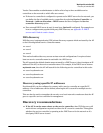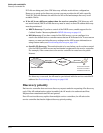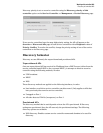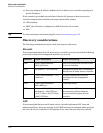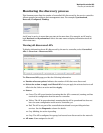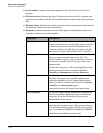
Working with controlled APs
Discovery of controlled APs
Discovery of controlled APs
This section describes how the discovery process works and how it can be customized.
Discovery is the process by which a controlled AP finds a service controller on a network and
establishes a secure management tunnel with it. To see how the discovery process fits into
overall controlled mode operations, see Key controlled-mode events on page 3-5.
In most cases, the factory default configuration of an AP will result in automatic discovery of
a service controller with no configuration required. However, for some network topologies it
may be necessary to configure the discovery process as described in this section.
See Discovery recommendations on page 3-9 for examples of topologies that can use
automatic discovery and those that require discovery to be configured.
Note If you intend to manage controlled APs via local mesh, see Local mesh on page 13-1.
Provisioning can limit the discovery of potential service controllers. See Provisioning on
page 3-31.
Discovery overview
Although the specifics of the discovery process vary depending on whether an AP is
unprovisioned (in its factory default state) or provisioned (had its connectivity or discovery
settings changed from their factory default settings), the discovery process can be
summarized as follows:
1. The AP uses various methods to locate one or more service controllers that are reachable
on the network. The preferred way to monitor AP discovery is via the service controller
management tool (see Monitoring the discovery process on page 3-13). When in visual
range of the APs, you can watch the status lights for an indication of discovery progress.
See the status light information in the AP Quickstart (provided and available online).
2. Discovered service controllers send a discovery reply to the AP. If the service controller
is configured to require AP authentication, the reply is only sent after the AP is
authenticated by the service controller.
3. The service controller adds the AP to a group. This will either be the default group (if the
AP is new/unknown) or an existing group (to which the AP was previously assigned).
4. The AP is now managed by the service controller, and it can be configured and monitored
using the service controller management tool.
Note APs must be connected to the network via Port 1 (or the Uplink port on an MSM317) for
discovery to work.
Unprovisioned APs must obtain an IP address from a DHCP server before discovery can
be initiated. When discovery occurs on a VLAN, the DHCP server must be active on the
VLAN.
3-7



